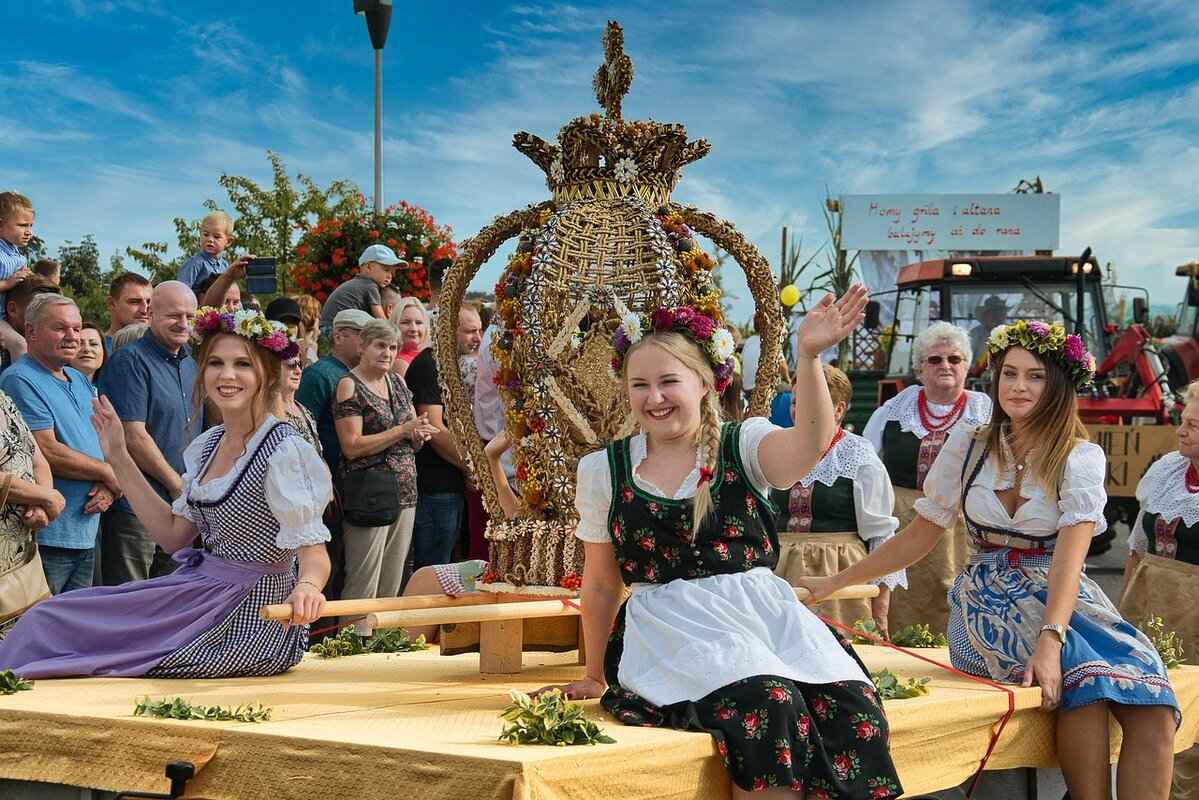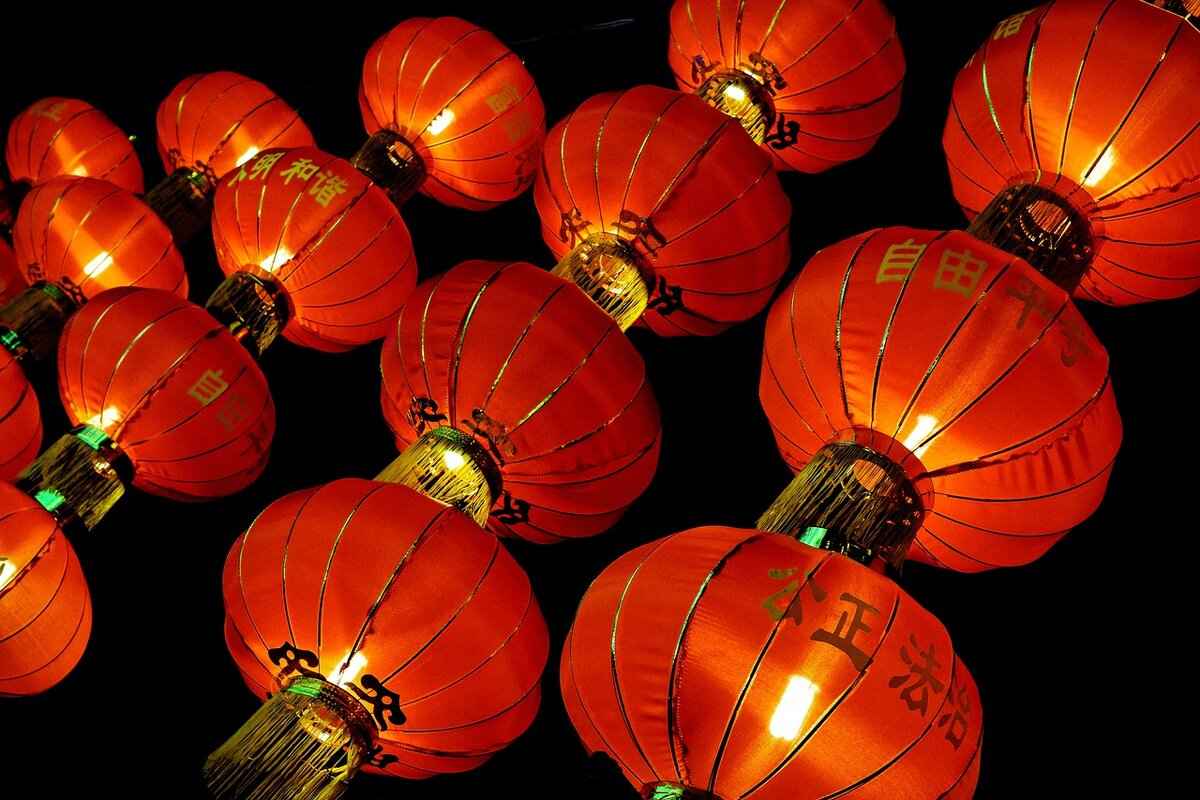The Holi festival, often referred to as the Festival of Colors, is a vibrant celebration that marks the arrival of spring and the triumph of good over evil. This joyous occasion is not just about colors and water fights; it also showcases a rich tapestry of culinary delights that make the festivities even more special. Among these, Thandai and Gujiya stand out as traditional favorites that are deeply rooted in the cultural significance of Holi.
What is Holi and Why is it Celebrated?
Holi is celebrated with great enthusiasm across India and in various parts of the world. It symbolizes the victory of Lord Vishnu over the demon king Hiranyakashipu and signifies the arrival of spring. The festival fosters a spirit of unity, love, and forgiveness as people come together to celebrate with colors, music, and delicious food.
What is Thandai and Why is it Popular During Holi?
Thandai is a refreshing beverage made from milk, nuts, and a blend of aromatic spices. Traditionally enjoyed during Holi, it is known for its cooling properties, making it perfect for the warm spring weather. The drink is often infused with ingredients like almonds, cardamom, and a hint of saffron, which not only enhance its flavor but also contribute to its cultural significance during the festival.
How to Make Authentic Thandai at Home?
Making Thandai at home is a delightful experience. Here’s a simple recipe:
Ingredients:- 2 cups of milk- 1/4 cup almonds- 1/4 cup cashews- 1/4 cup sugar (adjust to taste)- 1 tsp cardamom powder- A few strands of saffron- 1/4 cup rose water (optional)Instructions:1. Soak the almonds and cashews in water for a few hours, then blend them into a smooth paste.2. In a saucepan, bring the milk to a boil and let it cool slightly.3. Mix the nut paste, sugar, cardamom powder, and saffron into the milk.4. Add rose water if desired, mix well, and serve chilled.
What is Gujiya and How is it Made?
Gujiya is a sweet dumpling filled with a mixture of khoya (dried milk), nuts, and sugar, often flavored with cardamom. This delightful pastry is a traditional treat during Holi, symbolizing the sweetness of life and the joy of celebration. The preparation involves making a dough, filling it with the sweet mixture, and deep-frying until golden brown.
How to Celebrate Holi with Traditional Sweets?
Traditional sweets play a vital role in Holi celebrations, enhancing the festive spirit. Apart from Thandai and Gujiya, other popular sweets include Barfi and Ladoo. These treats not only satisfy the sweet tooth but also carry cultural significance, representing the joy and abundance of life.
Tips for Enjoying Holi Safely and Responsibly
While Holi is a time for fun and festivities, safety should never be overlooked. Here are some practical tips:
- Use organic colors to avoid skin irritation.
- Stay hydrated, especially when consuming sweet treats and drinks.
- Be mindful of dietary restrictions when sharing food.
- Plan your celebrations in safe environments to prevent accidents.
In conclusion, the Holi festival is a beautiful blend of colors, joy, and culinary delights. Embracing traditional dishes like Thandai and Gujiya not only enhances the festive experience but also connects us to the rich cultural heritage of India. So, gather your loved ones, indulge in these delightful treats, and celebrate the spirit of Holi!

What is Holi and Why is it Celebrated?
Holi, often referred to as the Festival of Colors, is a vibrant and joyous celebration that marks the arrival of spring and symbolizes the triumph of good over evil. This ancient festival, celebrated predominantly in India and Nepal, has deep cultural roots and is observed by millions around the world. Its significance extends beyond mere festivities, as it embodies the spirit of unity, love, and the renewal of relationships.
The origins of Holi can be traced back to various mythological tales. One of the most popular stories is that of Prahlad and Holika. Prahlad, a devout follower of Lord Vishnu, faced persecution from his father, King Hiranyakashipu, who demanded that everyone worship him instead of the gods. Holika, the king’s sister, was granted a boon that made her immune to fire. In a bid to kill Prahlad, she tricked him into sitting in a fire with her. However, due to his unwavering faith, Prahlad emerged unscathed while Holika perished. This tale symbolizes the victory of devotion and righteousness over evil.
Another significant aspect of Holi is its connection to the agricultural cycle. The festival coincides with the harvest season, celebrating the abundance of crops and the end of winter. It is a time when people express gratitude for the bountiful harvest and seek blessings for future prosperity.
During Holi, people engage in various traditions that bring communities together. One of the most iconic practices is the throwing of colored powders, known as gulal, which fosters a sense of camaraderie among participants. This act of playfully splashing colors represents the joy of life and the vibrant hues of nature, reminding everyone of the beauty that spring brings.
Moreover, Holi encourages the breaking down of social barriers. People from different backgrounds come together to celebrate, share food, and participate in festivities, reinforcing the idea of harmony and togetherness. This is especially evident in the way families and friends gather to enjoy traditional sweets and drinks, further enhancing the festive spirit.
As the festival approaches, homes are adorned with colorful decorations, and preparations for special dishes begin. Sweets like gujiya and beverages such as thandai become staples of the celebration, adding to the rich tapestry of culinary traditions associated with Holi.
In recent years, Holi has gained global recognition, celebrated in various countries outside India. Communities worldwide embrace the festival, showcasing its universal values of love, joy, and friendship. Events and gatherings are organized to share the essence of Holi, promoting cultural exchange and understanding.
In conclusion, Holi is much more than a mere festival of colors; it is a celebration of life, love, and the eternal struggle between good and evil. Its rich history and cultural significance make it a cherished occasion that resonates with people of all ages and backgrounds. As the colors of Holi fill the air, they serve as a reminder of the beauty of diversity and the importance of unity in our shared human experience.

What is Thandai and Why is it Popular During Holi?
Thandai is not just a drink; it is a symbol of celebration during the vibrant festival of Holi in India. This traditional beverage, rich in flavor and history, is made from a delightful blend of milk, nuts, and spices. Its creamy texture and aromatic spices make it a refreshing choice for the festivities, offering a perfect balance of sweetness and nuttiness that complements the joyous atmosphere of Holi.
Historically, Thandai has roots in ancient Indian culture, where it was believed to have cooling properties that help counteract the heat of the spring season. Traditionally, it is made with a variety of ingredients, including almonds, pistachios, cardamom, and saffron, all of which contribute to its unique taste and health benefits. The drink is often enjoyed chilled, making it a perfect refreshment during the lively celebrations.
Thandai holds a special place in Holi celebrations for several reasons:
- Tradition: It has been a part of Holi festivities for centuries, symbolizing the arrival of spring and the joy of togetherness.
- Flavorful Experience: The combination of spices and nuts creates a rich flavor that enhances the festive spirit.
- Health Benefits: Ingredients like almonds and saffron are known for their nutritional properties, making Thandai a wholesome drink.
Making Thandai at home is both simple and rewarding. Here’s a basic recipe to get you started:
Ingredients:- 2 cups of milk- 1/4 cup of almonds- 1/4 cup of pistachios- 1/4 cup of sugar (adjust to taste)- 1 teaspoon of cardamom powder- A few strands of saffron- Ice cubes (optional)Instructions:1. Soak the almonds and pistachios in water for a few hours or overnight.2. Drain and blend the nuts with a little milk to form a smooth paste.3. In a pot, heat the milk and add the nut paste, sugar, cardamom powder, and saffron.4. Stir well and let it cool. Once cooled, blend again for a frothy texture.5. Serve chilled, garnished with crushed nuts and ice cubes if desired.
While the traditional Thandai is delightful, you can also explore various creative variations to cater to different tastes:
- Vegan Thandai: Substitute milk with almond or coconut milk for a dairy-free option.
- Chocolate Thandai: Add cocoa powder for a rich, chocolaty twist.
- Fruit-Infused Thandai: Blend in fruits like mango or banana for a fruity flavor.
Thandai is more than just a drink; it is an experience that encapsulates the essence of Holi. As families and friends come together to celebrate, sharing a glass of Thandai fosters a sense of unity and joy. Its rich flavors and historical significance make it a cherished part of the festival, ensuring that each sip is a reminder of the beautiful traditions that bind us together during this colorful celebration.
How to Make Authentic Thandai at Home?
Making Thandai at home is not only a delightful experience but also a wonderful way to celebrate the essence of Holi. This traditional Indian drink, rich in flavors and nutrients, is a perfect accompaniment to the festivities. Below is a comprehensive step-by-step recipe to help you craft the ideal Thandai, along with tips to achieve the perfect balance of flavors.
To create a delicious Thandai, gather the following essential ingredients:
- Milk: 1 liter (full-fat for creaminess)
- Almonds: 100 grams (soaked overnight)
- Pistachios: 50 grams (for garnish)
- Cardamom: 5-6 pods (for flavor)
- Saffron: A pinch (for color and aroma)
- Sugar: 100 grams (adjust to taste)
- Rose water: 2 tablespoons (optional, for fragrance)
- Black pepper: 1 teaspoon (for a spicy twist)
- Water: For blending
Follow these steps to prepare your homemade Thandai:
- Soak the Nuts: Begin by soaking the almonds and pistachios in water for a few hours or overnight. This softens them and enhances their flavor.
- Make the Paste: Drain the soaked nuts and blend them with cardamom, saffron, and a little water until you achieve a smooth paste.
- Heat the Milk: In a saucepan, bring the milk to a boil. Once boiling, reduce the heat and let it simmer for about 5 minutes.
- Add the Nut Paste: Stir in the prepared nut paste into the simmering milk, mixing well to ensure it is evenly distributed.
- Sweeten the Mixture: Add sugar to taste and continue to simmer for another 10 minutes, allowing the flavors to meld.
- Cool and Strain: Remove from heat, let it cool, and then strain the mixture through a fine sieve to remove any solids.
- Chill and Serve: Refrigerate the Thandai for a few hours before serving. Serve it chilled in glasses, garnished with crushed pistachios and a sprinkle of saffron.
To ensure that your Thandai is as delightful as possible, consider the following tips:
- Adjust Sweetness: Feel free to adjust the sugar levels based on your personal preference.
- Experiment with Flavors: Try adding different spices like nutmeg or cinnamon for a unique twist.
- Make it Vegan: Substitute regular milk with almond milk or coconut milk for a vegan version.
- Garnish Creatively: Use edible flowers or colorful sprinkles for a visually appealing presentation.
By following these steps and tips, you can create a refreshing and flavorful Thandai that embodies the spirit of Holi. Enjoy this delightful beverage with family and friends, making your celebrations even more special!
Essential Ingredients for Thandai
Thandai is a beloved traditional drink that embodies the essence of Indian festivals, particularly Holi. Its unique blend of flavors and ingredients makes it a refreshing choice during the vibrant celebrations. In this section, we will explore the essential ingredients that make Thandai so special, focusing on how each component contributes to its rich flavor profile.
Thandai is not just a drink; it is a symphony of flavors that comes together to create a delightful experience. The key ingredients include:
- Almonds: Rich in nutrients, almonds add a creamy texture and a subtle sweetness to Thandai. They are often soaked and blended into a smooth paste, enhancing the drink’s richness.
- Saffron: Known for its vibrant color and distinctive flavor, saffron is a luxury ingredient that elevates Thandai. Its aromatic qualities not only enhance the taste but also provide a beautiful golden hue.
- Cardamom: This aromatic spice brings a warm, slightly sweet flavor to Thandai. Cardamom is known for its digestive properties and adds a refreshing note that balances the richness of the drink.
- Milk: The base of Thandai, milk provides a creamy consistency. It can be prepared with full-fat milk for a richer taste or with almond milk for a vegan alternative.
- Rose Water: A few drops of rose water infuse Thandai with a floral aroma, making it even more refreshing. It complements the other flavors beautifully.
- Fennel Seeds: These seeds add a unique flavor profile to Thandai. Fennel seeds are known for their digestive benefits and contribute a slight anise-like taste.
- Black Pepper: A pinch of black pepper adds a subtle heat, enhancing the overall flavor profile of the drink.
The combination of these ingredients creates a complex flavor experience. The sweetness of almonds and the floral notes of saffron work harmoniously to create a drink that is both luxurious and comforting. The spices like cardamom and black pepper introduce warmth and depth, while the rose water adds a refreshing finish. Each sip of Thandai is a celebration of flavors, making it a quintessential part of Holi festivities.
Absolutely! Thandai can be easily customized to suit different tastes. You can experiment with various nuts, such as cashews or pistachios, or add different spices like nutmeg or star anise for a unique twist. Additionally, for those who prefer a non-dairy option, almond or coconut milk can be used as a base.
In summary, the essential ingredients of Thandai—almonds, saffron, cardamom, milk, rose water, fennel seeds, and black pepper—come together to create a drink that is rich in flavor and tradition. Each component plays a vital role in enhancing the overall experience, making Thandai a must-have during Holi celebrations. Whether enjoyed plain or with creative variations, this drink is sure to delight the senses and bring joy to the festive occasion.
Variations of Thandai You Can Try
During the vibrant festival of Holi, Thandai holds a special place as a refreshing drink that embodies the spirit of celebration. While the traditional Thandai is beloved for its rich and creamy texture, there are numerous creative variations that cater to diverse tastes and dietary preferences. This article explores exciting options like vegan Thandai and flavored versions, ensuring that everyone can enjoy this festive beverage.
For those who prefer a plant-based diet, vegan Thandai is an excellent alternative. Instead of using dairy milk, you can substitute it with almond milk, coconut milk, or oat milk. These alternatives not only make the drink vegan-friendly but also add unique flavors:
- Almond Milk Thandai: This version enhances the nutty flavor and is perfect for those who love almonds.
- Coconut Milk Thandai: This variant brings a tropical twist, making it a refreshing option for warm days.
- Oat Milk Thandai: Creamy and smooth, oat milk adds a subtle sweetness to the drink.
To add an exciting twist to the classic Thandai, consider experimenting with different flavors:
- Rose Thandai: Infusing rose water or adding dried rose petals gives a fragrant and floral note to the drink.
- Cardamom and Ginger Thandai: Enhancing the spice profile with fresh ginger and extra cardamom can create a warming effect, perfect for cooler weather.
- Chocolate Thandai: For chocolate lovers, adding cocoa powder or melted chocolate transforms Thandai into a decadent treat.
For individuals with nut allergies, Thandai can still be enjoyed by substituting nuts with seeds such as sunflower or pumpkin seeds. This not only keeps the drink safe for those with allergies but also provides a different texture and flavor:
- Sunflower Seed Thandai: A safe alternative that still offers a creamy consistency.
- Pumpkin Seed Thandai: This version adds a unique taste and is packed with nutrients.
Adding fruits can elevate Thandai to a whole new level. Here are some delicious fruit-infused ideas:
- Mango Thandai: Incorporating fresh mango puree makes for a tropical, summery drink that is perfect for Holi.
- Strawberry Thandai: Blending in strawberries can create a vibrant pink drink that is as visually appealing as it is delicious.
For those looking to add a festive flair, Thandai can be transformed into a mocktail. Mixing Thandai with sparkling water or soda can create a bubbly, refreshing beverage. Garnish with mint leaves or a slice of lime for an extra touch.
With these creative variations, Thandai can cater to the diverse tastes and dietary needs of your guests during Holi celebrations. Whether you opt for a traditional recipe or try one of these exciting twists, Thandai will surely remain a beloved part of your festive experience.
What is Gujiya and How is it Made?
Gujiya is a beloved Indian sweet pastry, particularly famous for its presence during the vibrant festival of Holi. This delightful treat is filled with a rich mixture of khoya (reduced milk) and an assortment of nuts, making it a favorite among both children and adults. The preparation of Gujiya is not just about cooking; it embodies the spirit of celebration, family, and tradition.
The origins of Gujiya can be traced back to the northern regions of India, where it has been a part of festive occasions for centuries. Historically, it is said that Gujiya was offered to deities during Holi as a symbol of gratitude and celebration. This pastry is often associated with the arrival of spring, marking a time of renewal and joy.
To make Gujiya at home, you will need the following ingredients:
- For the dough:
- 2 cups all-purpose flour
- 4 tablespoons ghee (clarified butter)
- Water (as needed)
- A pinch of salt
- For the filling:
- 1 cup khoya
- ½ cup mixed nuts (cashews, almonds, pistachios)
- ½ cup powdered sugar
- 1 teaspoon cardamom powder
- 2 tablespoons grated coconut (optional)
Here’s a step-by-step guide on how to prepare Gujiya:
1. In a mixing bowl, combine the all-purpose flour, ghee, and salt. Gradually add water to form a smooth dough. Cover it and let it rest for 30 minutes.2. In another pan, heat the khoya on low flame until it softens. Add the mixed nuts, powdered sugar, and cardamom powder. Mix well and set aside to cool.3. Divide the dough into small balls and roll each ball into a thin circle.4. Place a spoonful of the filling in the center of each circle and fold it over to create a half-moon shape. Seal the edges by pressing them together or using a fork.5. Heat oil in a deep pan and fry the Gujiyas until they turn golden brown. Drain on paper towels to remove excess oil.6. Allow them to cool before serving. Gujiya can be enjoyed as is or dusted with powdered sugar for added sweetness.
Gujiya holds a special place in the hearts of many, not only for its exquisite taste but also for the memories it creates during Holi celebrations. The act of preparing these pastries often brings families together, fostering a sense of community and togetherness.
In addition to the traditional khoya filling, many families have their unique twists on Gujiya. Some may incorporate chocolate or fruit fillings to cater to modern tastes, ensuring that this age-old recipe continues to evolve while retaining its cultural significance.
As you prepare Gujiya for Holi, remember that it’s more than just a sweet treat; it’s a celebration of heritage, love, and the joy of sharing with others. Whether you’re making them for family or friends, these pastries are sure to bring smiles and sweeten the festivities.

How to Celebrate Holi with Traditional Sweets?
Celebrating Holi is incomplete without indulging in traditional sweets that not only tantalize the taste buds but also enhance the festive spirit. These delightful treats symbolize the joy and togetherness associated with this vibrant festival. In this section, we will explore various traditional sweets, their significance, and provide you with recipes and tips for making them at home.
Traditional sweets are a crucial part of Holi celebrations as they embody the essence of the festival. They are shared among friends and family, fostering a sense of community and love. Sweets like Gujiya, Ladoo, and Barfi are not just delicious; they also carry cultural significance, representing the spirit of giving and sharing.
- Gujiya: A sweet dumpling filled with khoya and nuts, Gujiya is a must-have during Holi. Its crispy exterior and rich filling make it a favorite among all.
- Ladoo: These round sweet balls made from various ingredients like besan (gram flour) or coconut are easy to prepare and loved by everyone.
- Barfi: A milk-based sweet, Barfi comes in various flavors, including pistachio, coconut, and chocolate, making it a versatile treat.
Making Gujiya at home can be a fun activity. Here’s a simple recipe to guide you:
Ingredients:- 2 cups all-purpose flour- 1 cup khoya- 1/2 cup powdered sugar- 1/4 cup chopped nuts (almonds, cashews)- 1/4 tsp cardamom powder- Oil for fryingInstructions:1. Prepare the dough by mixing flour with water and kneading it until smooth.2. For the filling, heat khoya in a pan, add sugar, nuts, and cardamom, and mix well.3. Roll out small circles of dough, fill them with the mixture, and seal the edges.4. Fry in hot oil until golden brown. Serve warm!
To ensure your sweets turn out perfectly, consider the following tips:
- Use fresh ingredients to enhance flavor.
- Pay attention to the consistency of the dough; it should be pliable but not sticky.
- Fry sweets on medium heat to ensure they cook evenly without burning.
Sharing sweets with loved ones is a beautiful way to celebrate Holi. Arrange a platter of assorted sweets and invite friends and family to enjoy them together. Pair these sweets with traditional drinks like Thandai to elevate the festive experience.
If you’re looking for healthier options, consider making oatmeal ladoos or fruit-based sweets. These alternatives can provide the same festive joy with added nutritional benefits.
In summary, traditional sweets are an integral part of Holi celebrations, bringing people together and enhancing the festive spirit. By preparing these delightful treats at home, you can create lasting memories with your loved ones while honoring the rich traditions of this vibrant festival.
Popular Sweets to Prepare for Holi
Holi, the vibrant Festival of Colors, is not only celebrated with joyous water fights and colorful powders but also with an array of delectable sweets that enhance the festive spirit. Among the most cherished treats are Barfi and Ladoo, which hold significant cultural value and are essential elements of Holi celebrations. Let’s dive deeper into these popular sweets and their place in this joyous occasion.
Barfi is a traditional Indian sweet made from condensed milk, sugar, and a variety of flavorings, often garnished with nuts. Its creamy texture and rich taste make it a beloved treat during Holi. The origins of Barfi can be traced back to ancient India, where it was prepared for special occasions. During Holi, families prepare this delightful sweet to share with friends and neighbors, symbolizing love and togetherness.
Making Barfi at home is a rewarding experience. The basic ingredients include:
- Condensed milk
- Sugar
- Cardamom powder
- Nuts (such as almonds and pistachios)
- Ghee (clarified butter)
To prepare Barfi, cook the condensed milk with sugar and ghee until it thickens. Add cardamom and nuts, then spread the mixture onto a flat surface to cool and set. Once firm, cut into squares or diamonds for serving.
Ladoos are round-shaped sweets made from various ingredients, including chickpea flour, sugar, and ghee. They are not only delicious but also symbolize prosperity and happiness. During Holi, Ladoos are often prepared in large batches and distributed among family and friends, reinforcing bonds and spreading joy.
To create Ladoos, gather the following ingredients:
- Chickpea flour (besan)
- Sugar
- Ghee
- Nuts and dried fruits (optional)
Begin by roasting the chickpea flour in ghee until it turns golden brown. Gradually mix in sugar and any additional nuts or dried fruits. Once the mixture cools slightly, shape it into small balls. These sweet treats are not only easy to make but also a delightful addition to any Holi celebration.
Besides Barfi and Ladoo, there are numerous other sweets that brighten the Holi festivities:
- Gulab Jamun: Soft, syrup-soaked balls made from milk solids.
- Jalebi: Crispy, spiral-shaped sweets dipped in sugar syrup.
- Kaju Katli: A rich cashew fudge, often adorned with edible silver leaf.
Each of these sweets carries its own unique flavor and cultural significance, making them a perfect addition to the Holi celebrations.
When serving sweets during Holi, presentation matters. Arrange them on colorful platters, and consider pairing them with traditional drinks like Thandai. This not only enhances the visual appeal but also adds to the overall festive atmosphere. Sharing these sweets with loved ones is a beautiful way to express affection and celebrate the spirit of Holi.
In conclusion, sweets like Barfi and Ladoo are integral to the Holi festival, embodying joy, love, and the spirit of togetherness. Preparing and sharing these delightful treats not only enhances the celebration but also preserves the rich culinary traditions associated with this vibrant festival.
Tips for Enjoying Holi Safely and Responsibly
Holi is a vibrant and joyous festival celebrated across India, marking the arrival of spring and the triumph of good over evil. While the festival is a time for fun, laughter, and colorful celebrations, it’s essential to prioritize safety to ensure a delightful experience for everyone involved. Here are some practical tips to help you enjoy Holi responsibly.
Colors are the essence of Holi, but it’s crucial to choose them wisely. Here are some tips:
- Opt for Natural Colors: Whenever possible, use organic or herbal colors made from natural ingredients like turmeric, beetroot, and flower petals. These are less likely to cause skin irritation.
- Patch Test: Before applying any color, conduct a patch test on a small area of your skin to check for allergic reactions.
- Stay Hydrated: Drink plenty of water before and during the celebrations. Staying hydrated helps your skin cope with the colors and reduces the risk of irritation.
Food plays a significant role in Holi celebrations. To enjoy the culinary delights safely, consider the following:
- Watch for Allergens: Be mindful of any food allergies among your guests. Ensure that sweets and snacks are labeled clearly, especially those containing nuts or dairy.
- Moderation is Key: While indulging in traditional sweets like Gujiya and Thandai is tempting, moderation is essential. Overindulgence can lead to digestive issues.
- Stay Clean: Maintain hygiene while preparing and serving food. Wash your hands regularly and use clean utensils to prevent foodborne illnesses.
Colors can be tough on your skin and hair. To minimize damage, follow these tips:
- Apply Oil: Before heading out, apply coconut oil or olive oil to your skin and hair. This creates a barrier that makes it easier to wash off colors later.
- Wear Protective Clothing: Choose clothes that you don’t mind getting stained. Opt for long sleeves and pants to protect your skin from direct contact with colors.
- Post-Celebration Care: After the festivities, cleanse your skin thoroughly using a gentle exfoliating scrub and hydrate with a good moisturizer.
Even with precautions, accidents can happen. Here’s how to handle them:
- Eye Irritation: If colors get into your eyes, rinse them immediately with clean water. If irritation persists, seek medical help.
- Skin Reactions: For any allergic reactions or rashes, apply an antihistamine cream or consult a dermatologist for advice.
- Stay Calm: In case of any accidents during the celebrations, remain calm and assist those in need. Quick thinking can prevent minor issues from escalating.
By following these tips, you can ensure a safe and enjoyable Holi celebration for yourself and your loved ones. Embrace the spirit of the festival while being responsible, and make beautiful memories that last a lifetime!
Frequently Asked Questions
- What is the significance of Holi?
Holi, often referred to as the Festival of Colors, symbolizes the arrival of spring and the triumph of good over evil. It’s a time for joy, renewal, and community bonding, where people come together to celebrate love and friendship.
- Why is Thandai so popular during Holi?
Thandai is a cherished traditional drink during Holi, made with milk, nuts, and aromatic spices. Its refreshing taste and rich ingredients not only help beat the heat but also enhance the festive spirit, making it a must-have during the celebrations.
- How can I make Gujiya at home?
Making Gujiya is a delightful process! Start by preparing a dough with flour, then fill it with a mixture of khoya, nuts, and spices. Shape them into crescents and fry until golden. Enjoy these sweet treats that are synonymous with Holi!
- What are some tips for celebrating Holi safely?
To enjoy Holi responsibly, use natural colors to avoid skin irritations, stay hydrated, and be mindful of your surroundings. Also, ensure to keep food and drinks safe from contamination during the festivities.
- What are some other traditional sweets to prepare for Holi?
Besides Gujiya, you can prepare Barfi and Ladoo, both of which are delicious and culturally significant. These sweets not only satisfy your sweet tooth but also add to the festive ambiance of Holi!














